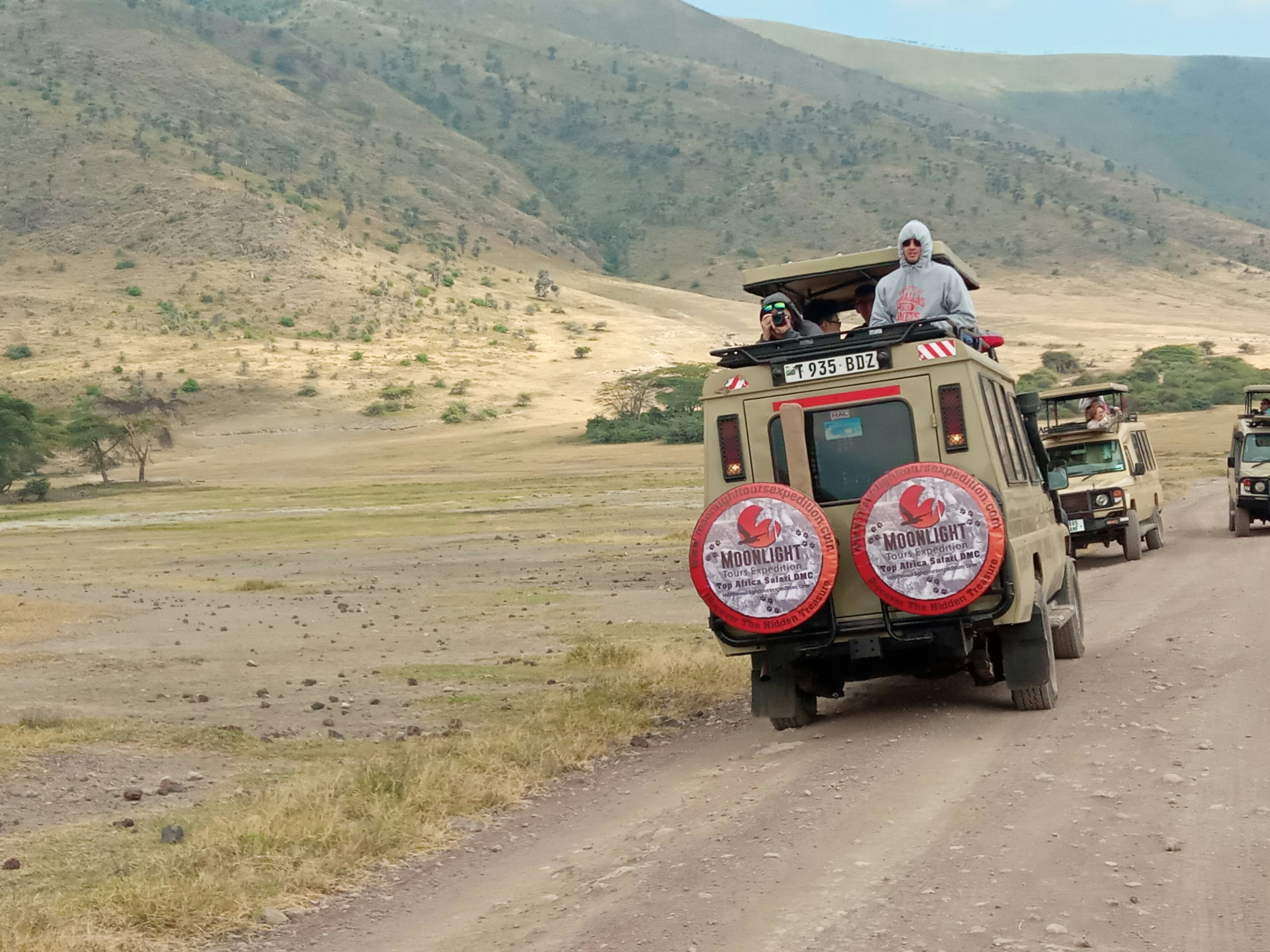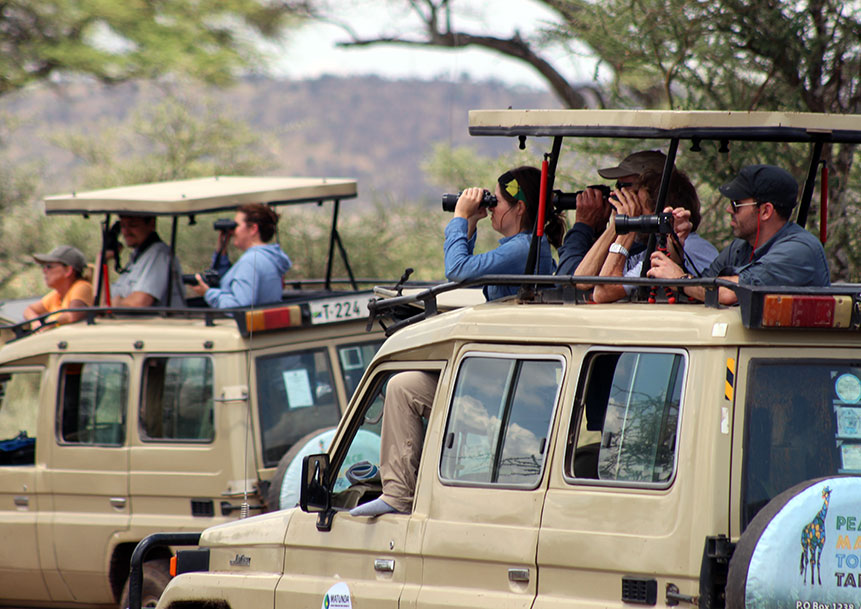Ngorongoro Crater Safaris: A Journey into Tanzania’s Wild Heart
Picture yourself standing on the rim of the Ngorongoro Crater just as the sun peeks over the horizon. The air is cool, carrying the faint scent of acacia trees and the distant rumble of a lion’s roar. Below, a vast bowl of wilderness stretches out, alive with movement—zebras grazing, elephants lumbering, and birds painting the sky with flashes of colour. This isn’t just a place; it’s a living, breathing masterpiece of nature. Welcome to the Ngorongoro Crater, Tanzania’s crown jewel for safari lovers.
I’ll never forget my first trip here. As our jeep wound down the steep, bumpy track into the crater, I felt like I was stepping into a National Geographic documentary. The sheer scale of it hit me hard—a world within a world, teeming with life. If you’ve ever dreamed of seeing Africa’s wildlife up close, this is where that dream comes alive.
Why the Ngorongoro Crater Feels Like Magic
Let’s talk about what makes this place so special. The Ngorongoro Crater isn’t just a random spot on the map; it’s the world’s largest inactive volcanic caldera, formed millions of years ago when a volcano the size of Kilimanjaro collapsed in on itself. Now, it’s a UNESCO World Heritage Site and one of the Seven Natural Wonders of Africa (UNESCO Ngorongoro). Spanning roughly 260 square kilometres, the crater floor is like a natural stage where wildlife plays out its daily drama, no fences, no boundaries, just pure, untamed nature.
What sets it apart is its self-contained ecosystem. The crater’s steep walls, soaring up to 600 meters, trap water and vegetation, creating a haven where animals don’t need to wander far. It’s like nature’s own wildlife sanctuary, but way better than any zoo. As I gazed across the plains for the first time, I was struck by how everything seemed to fit together perfectly—lions lounging in the grass, hippos wallowing in the swamps, and flamingos turning Lake Magadi a vibrant pink.
A Bit of History and Geology
The crater’s story goes back about 2.5 million years, when a massive eruption left behind this sunken basin. Over time, wind and rain sculpted it into the lush habitat we see today, with grasslands, forests, and wetlands all thriving in harmony. The Ngorongoro Conservation Area, which includes the crater, is also home to the Maasai people, who’ve lived alongside the wildlife for centuries. Their name for the crater, “Ngorongoro,” comes from the sound of cowbells echoing in the hills, a poetic nod to their deep connection to the land (Wikipedia Ngorongoro).
Fun fact: the area around the crater includes Olduvai Gorge, where archaeologists found fossils of early humans dating back millions of years. It’s humbling to think you’re walking in the footsteps of our ancient ancestors while watching lions hunt in the distance.
The Wildlife That Steals Your Heart
If there’s one thing you’ll take away from a Ngorongoro Crater safari, it’s the wildlife. This place is a wildlife lover’s paradise, home to the Big Five—lions, elephants, buffalo, leopards, and rhinoceroses—along with thousands of other animals. With nearly 30,000 large mammals packed into this compact space, you’re practically tripping over incredible sightings (Ngorongoro Crater Facts).
One of my favourite moments was watching a pride of lions just chilling in the sun. Their golden fur blended into the grass, and they were so close I could hear their soft purrs. It was one of those pinch-yourself moments that made you realise how wild and wonderful this world is. But the Lions are just the start. You’ll see herds of wildebeests and zebras moving like a living wave across the plains, gazelles darting with impossible grace, and hippos grunting in the swamps. Overhead, over 550 bird species add splashes of colour, from flamingos to eagles (Wildlife Ngorongoro).
The crater’s high animal density means you’re never short on action. Whether it’s a leopard stalking through the acacia trees or a rare black rhino grazing in the distance, every moment feels like a gift. And because the crater is so contained, you’re almost guaranteed to see something jaw-dropping every time you look around.
The Big Five and Beyond
Here’s a quick rundown of the Big Five you’ll encounter:
AnimalWhy It’s Special
Lion. With around 60 lions in several prides, their dark manes and bold presence are unforgettable.
Elephant. Mostly solitary bulls, their massive forms against the Lerai Forest are a sight to behold.
Buffalo Herds of Cape buffalo roam the grasslands, their grumpy demeanour adding a touch of wildness.
Leopard Elusive and camouflaged, spotting one in the woodlands is a thrill worth waiting for.
Rhinoceros Over 25 black rhinos, a conservation success story, make sightings a rare privilege.
Beyond these stars, the crater is home to 7,000 wildebeests, 4,000 zebras, and countless other creatures, all thriving in this unique ecosystem (Ngorongoro Crater, Tanzania).
Planning Your Dream Safari
Ready to make this adventure happen? Planning a Ngorongoro Crater safari takes a bit of effort, but it’s so worth it. Let’s break it down.
When to Go
The dry season (June to October) is the sweet spot for wildlife viewing. Animals flock to waterholes, making them easier to spot, and the weather is cool and pleasant. That said, the wet season (November to May) has its charm—lush green hills, fewer crowds, and vibrant birdlife. I visited during the wet season and loved the quiet trails and emerald landscapes, even if I had to dodge a few raindrops (Tuliaessencetours).
Getting There
The crater is about 180 kilometres from Arusha, Tanzania’s safari hub. Most folks fly into Kilimanjaro International Airport, then either hop on a short flight to Lake Manyara Airstrip or take a 3–4-hour drive through the stunning Rift Valley. The drive is an adventure in itself, with views that’ll have you glued to the window.
Where to Stay
Accommodation options along the crater rim cater to every taste:
Type Example Vibe
Luxury Lodge Ngorongoro Serena Safari Lodge Plush rooms, gourmet food, and epic crater views (Tulia Essence Tours).
Tented Camp Lemala Ngorongoro: Cosy tents with the sounds of the bush at night.
Campsite Public Campsites Budget-friendly, sleeping under a blanket of stars.
Waking up to a sunrise over the crater is something you’ll never forget. I stayed at a tented camp and fell asleep to the distant calls of hyenas—pure magic.
How to Explore
You’ve got options for exploring the crater:
- Guided Game Drives: The go-to choice, with expert guides who know every corner of the crater.
- Self-Drive Safaris: Rent a 4×4 for a rugged adventure, but be ready for steep roads.
- Hot Air Balloon Rides: Splurge on a dawn flight for a bird’s-eye view of the wildlife below.
- Walking Safaris: Guided hikes in nearby highlands, like Empakaai Crater, offer a closer connection to nature (African Safari Journals).
My advice? Go with a guide. They’ll point out hidden animals and share stories that bring the place to life.
Tips to Make Your Safari Unforgettable
Here are some insider tips to elevate your experience:
- Start Early: Morning drives mean cooler temps, active animals, and golden light for photos.
- Pack Smart: Bring binoculars, a good camera, a hat, and sunscreen. Layers are key to changing weather.
- Respect the Land: Stick to paths, keep your distance from animals, and leave no trace.
- Chat with the Maasai: Cultural tours to Maasai villages are a chance to learn about their traditions.
- Be Patient: Wildlife doesn’t follow a schedule, but the wait is always worth it.
One thing I learned the hard way: bring plenty of water. The high altitude can sneak up on you, and staying hydrated keeps you ready for adventure.
Keeping the Crater Wild
The Ngorongoro Crater’s beauty comes with a responsibility to protect it. The Ngorongoro Conservation Area Authority works tirelessly to combat poaching and preserve habitats, especially for endangered species like the black rhino. Thanks to their efforts, the rhino population has grown to over 25 (Ngorongoro Crater, Tanzania). As visitors, we can help by choosing eco-friendly tour operators, following park rules, and supporting conservation initiatives.
Why This Place Stays With You
As I drove away from the crater, I couldn’t shake the feeling of awe. The Ngorongoro Crater isn’t just a safari spot; it’s a window into a world where nature runs the show. The sight of a lioness grooming her cubs, the thunder of a buffalo herd, the quiet grace of a leopard in the trees—it’s raw, wild, and deeply humbling. This is the kind of place that lingers in your heart, reminding you how incredible our planet is.
So, if you’re thinking about a safari, don’t just dream about it—make it happen. The Ngorongoro Crater is waiting to show you the wild side of Tanzania. Pack your sense of wonder and go. You won’t come back the same.







